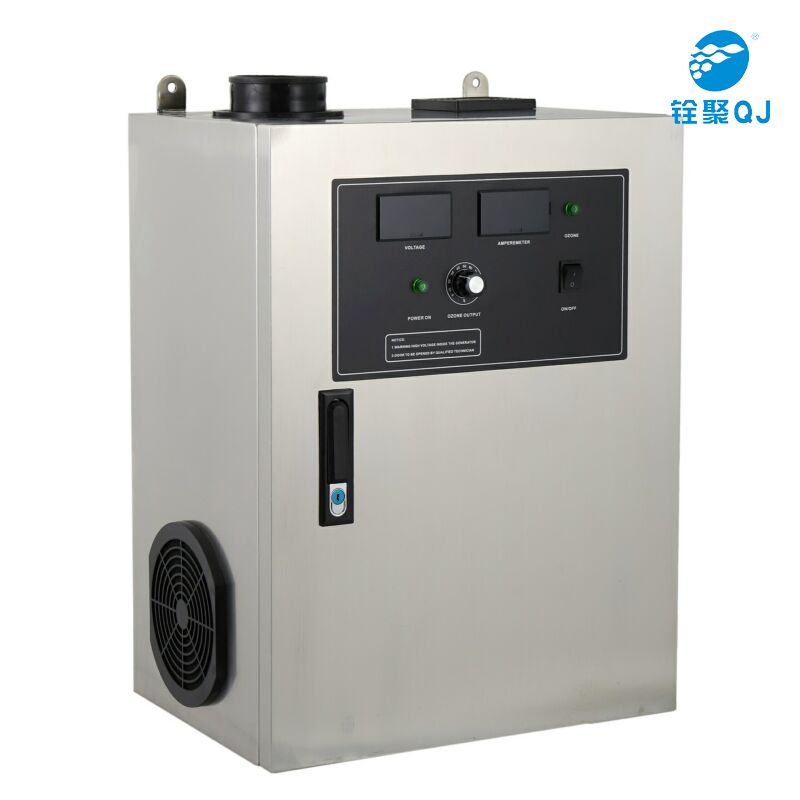Ozone generator: Environmental protection practice of water treatment in food factories
Water treatment in food factories is not only related to product quality, but also closely linked to environmental protection requirements. With the increasingly stringent environmental regulations, food factories have higher and higher requirements for water treatment. Although the traditional chemical water treatment method can purify water quality, it is easy to produce secondary pollution, and the residual chemicals may affect the taste and quality of food.
Chemical water treatment usually requires the addition of a large amount of disinfectants. These agents will undergo complex chemical reactions in water. If not handled properly, they will cause serious pollution to soil and water sources. Moreover, residual chemicals may react with food raw materials, affecting the taste and nutritional content of food.
For example, a food factory used chemical water treatment, resulting in a faint medicinal smell in the produced beverages, and the market feedback was poor. In addition, the long-term use of chemicals may also cause microorganisms in the water to develop drug resistance, increasing the difficulty and cost of water treatment.
The process of water treatment by ozone generator is based on its strong oxidizing and decomposition characteristics. Ozone can react with organic matter, heavy metal ions, bacteria, viruses, etc. in water, decompose organic matter into carbon dioxide and water, and oxidize heavy metal ions into insoluble substances, thereby achieving the purpose of purifying water quality. At the same time, ozone has a strong killing effect on microorganisms in water, and its sterilization speed is fast and the effect is good.

Application of different water treatment links: all-round purification
Raw water pretreatment Before the raw water of the food factory enters the production link, the ozone generator can pre-treat it. In a juice production plant, the raw water is taken from the river, and the water contains a large amount of organic matter and microorganisms. After ozone pretreatment, the organic matter content in the water is reduced by 60%, and the number of microorganisms is reduced by 90%, which greatly reduces the burden of subsequent treatment processes, and also ensures the natural flavor of the juice.
Production water purification For production water that directly contacts food, such as filling water in beverage factories and cleaning water in food processing plants, the ozone generator can perform deep purification. A mineral water plant uses an ozone disinfector to treat bottling water, which not only kills bacteria and viruses in the water, but also removes odor and discolored substances in the water, making the taste of mineral water clearer. After testing, the treated water quality meets the international high-quality drinking water standards.
Sewage treatment The sewage of food factories contains a large amount of organic matter and suspended solids, which will pollute the environment if discharged directly. The ozone generator can pre-treat the sewage and reduce the chemical oxygen demand (COD) and biochemical oxygen demand (BOD) of the sewage.
From an environmental protection perspective, the ozone generator does not produce chemical residues when treating water, and the decomposition products are oxygen and water, which are pollution-free to the environment and meet the requirements of sustainable development. In a food industrial park, many companies jointly use ozone disinfectors for water treatment, and the qualified rate of sewage discharge in the park has increased from 75% to 98%, and has received environmental protection rewards and policy support from the local government. From an economic perspective, the application of ozone generators can improve the recycling rate of water and reduce the water cost and sewage treatment cost of food factories. According to statistics, food factories that use ozone disinfection machines for water treatment can increase their average water recycling rate by 30%, saving 20%-40% of water costs each year.


